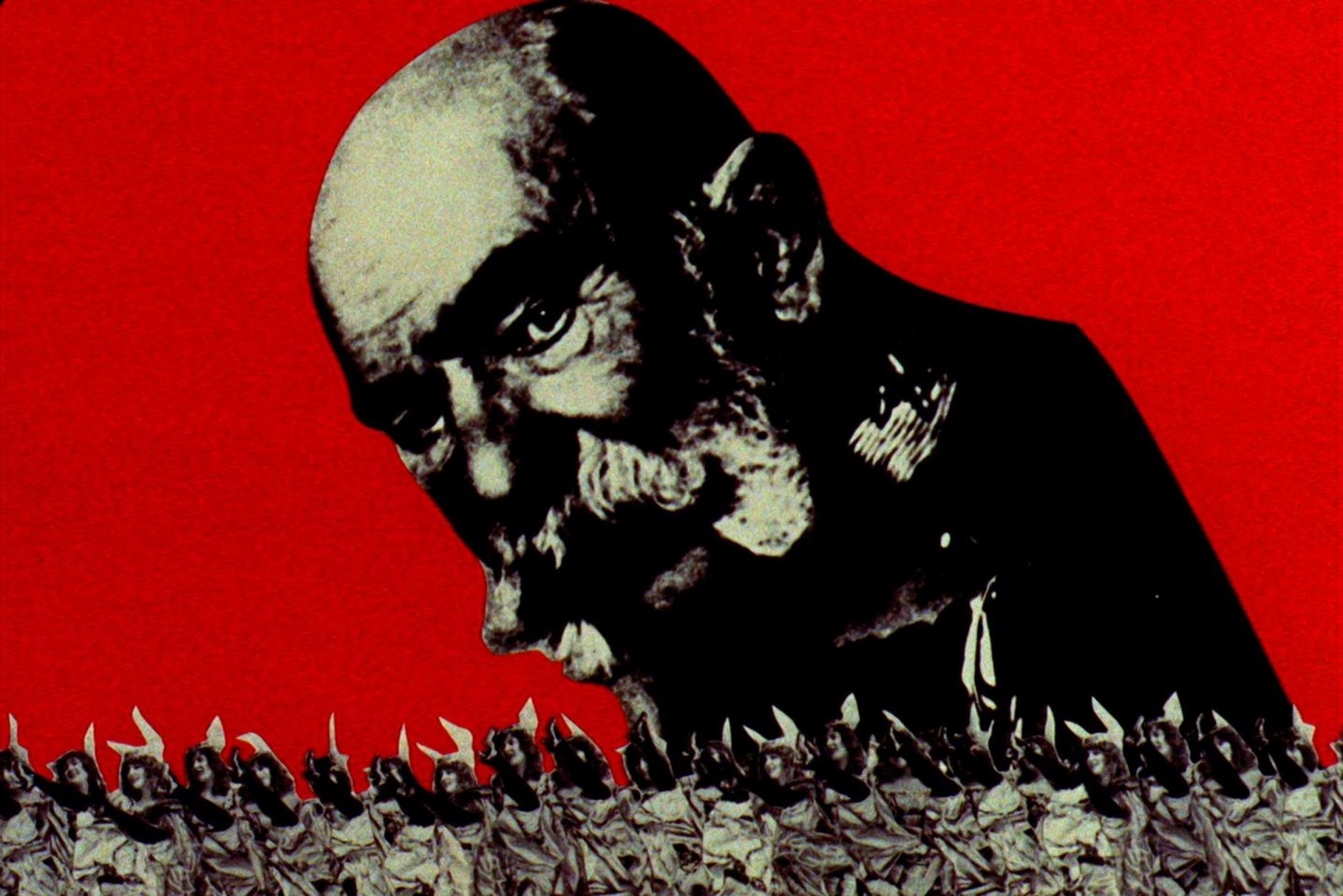Monologue / A monológ / Monolog
György Kovásznai (Pannonia Film Studios)
1963, Hungary, 11'44''
"A memoir-like, subjective and satirical overview of Hungarian history in the twentieth century. From the perspective of the young generation growing up after the end of World War II, the film gives a tableau of the lives of the grandparents and parents who lived around the turn of the century and in the interwar period, and were witnesses and even participants of the two world wars." (Annaida Orosz)
»Subjektiven in satiričen pregled madžarske zgodovine 20. stoletja podoben memoarju. Film predstavlja perspektivo mlade generacije, ki je odraščala po koncu druge svetovne vojne. Prikazuje življenja staršev in starih staršev, ki so živeli ob prelomu stoletja in med obema vojnama ter so bili priče ali pa celo udeleženci obeh svetovnih vojn.« (Annaida Orosz)
Recommended for children under 14: yes
Technique: collage animation
Gyorgy Kovasznai
was born on 15 May 1934 in Budapest, Hungary. In 1944 Kovasznai’s foster father was called upon for military service in Austria with his family. During their time away from Budapest the family lost their home, and all of their personal belongings. Returning to Budapest at the end of 1944, the family had to start life all over again, and lived in poverty from that time onwards. Kovasznai attended the Budapest College of the Fine Arts, but gave up his studies in 1954, at the age of 20. He then worked as a miner for a year and a half, in an effort to get some first-hand experience with the working class. However, the artist soon became completely disillusioned, as he found that “people hate struggle, great slogans and politics. They pay attention to them only as long as they suffer from them…” In 1956 Kovasznai was readmitted to the Budapest College of the Fine Arts, but was dismissed the following year before receiving his diploma. From 1958 to 1974 he worked as the editor and columnist of Nagyvilag, a significant Hungarian arts and literary journal, in which he published some of his criticism and paintings. He came to know writers and literature critics during his time at the journal. Around the same time, in the late 1950’s, Kovasznai started holding semi-illegal artistic gatherings at a friend’s house. An avant-garde artist community of 50-200 people came together several times a week, until the end of the 1960’s. It emerged decades later that his best friend, who hosted these sessions, had been passing on information about Kovasznai to the counterintelligence agency throughout the years. In 1961 Kovasznai started to work at the Pannonia Film Studio, Hungary’s main animation film studio, initially as a playwright, but soon moving on to make his own films. He continued to work at the studio until his death in 1983. Over the course of his career at the studio he made 25 short films, a mini TV-series and a musical-animation feature film. However, his animations were only shown for brief periods of time in cinemas, or not at all. Kovasznai never had an opportunity to exhibit his paintings and drawings in his lifetime. Politically, Kovasznai was attached to Marxism, yet had an ongoing conflict with the ruling regime. A significant part of his oeuvre reflects on the spring and summer of 1968, and the events in Paris and Prague. His take on the Prague Spring, which culminated in the Soviet invasion, was expressed in his short film “Memory of the summer of '74”. In this movie a cockroach-like creature and a black, windowless train form a sharp contrast with a world of summer joy, full of pop music and pretty girls. Kovasznai was diagnosed with a serious form of leukaemia in 1980, but refused to be treated and ran away from the hospital, so that he could create his final monumental series of paintings and write his great summarizing essay on art theory. He died in 1983. Discussing Kovasznai’s impact today Hungarian sociologist, Ferenc Hammer wrote: “Do you remember Peter Parker’s first fight in Spider-Man? When he is attacked by a bullying schoolmate, the viewers are made to see through Parker’s eyes that the opponents are moving in different time dimensions. For Parker, the fierce attack appears as a slow-motion shot. This is why those involved in the scene perceive Parker to be moving at a paranormal speed. Before the dazzled eyes of posterity, Kovasznai appears -for lack of a better definition- as a Gesamtkunst artist, whose works of total art keep evading the force of systematizing interpretation. While spellbound audiences keep gaping at the painted figures that abandon their frames, marvelling at the artist who side-step genre delimitations in a flash, let us conjure the aquarium of silence that surrounds Parker, with the noises of the outside world deadened into a hollow mumble.”
Source: https://www.gyorgykovasznai.com/his-story
Read more
Anna Ida Orosz. Collages from the Underground. How documentary methods emerged in Hungarian animation during the 1960s, [in] Propaganda, Ideology, Animation. Twisted Dreams of History, eds. Olga Bobrowska, Michał Bobrowski, Bogusław Zmudziński, Kraków 2019, pp. 118-134.
http://fundacja.etiudaandanima.pl/wp-content/uploads/2019/03/Propaganda-Ideology-Animation-Twisted-Dreams-of-History.pdf

